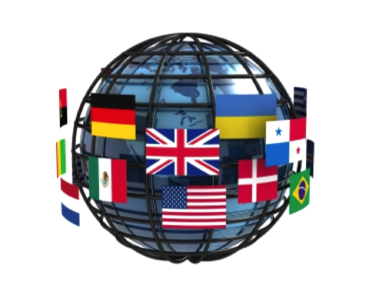Getting Culture Right in a Global Email World
"While you need to personalize content based on your segmentation goals, the cultural greeting can be even more important than the body of the email. First impressions matter."
How do you create emails that meet global cultural requirements and build relationships internally and externally while also providing a consistent worldwide branded message?
TIP: Verify you’re greeting your global contacts in the way that matters...before you finalize the back-end work.

While you need to personalize content based on your segmentation goals, the cultural greeting can be even more important than the body of the email. First impressions matter. If you can’t greet the contact in an appropriate cultural manner, why should they trust you and read the content you take such great pains to develop? Your contact may open the email, but it will definitely be harder to persuade them to convert.
In the US, we’re more informal in our greeting than other regions, using the first name in most cases. However, in Japan, Germany, and other areas they still have traditionally formal greetings, and they address local contacts with gender and title and last name.
When we launched our global automation tool, we mapped fields that provided the informal greeting and that we thought worked worldwide. However, even though we went through the normal requirement meetings and processes before launch, we quickly heard from our global peers that it was not enough. They were getting feedback from their contacts that our emails appeared disrespectful.
Here’s one example of the different needs in the U.S. compared to Germany:

The local teams had to add additional workflow to meet local personalization requirements, including exporting the lists, adding title or additional greeting information, doing a manual scrub of the data, and then reloading the lists into the system. This added about an hour to every one of those emails, resulting in high levels of lost productivity and frustration for our global peers. We quickly realized we needed solve this problem.
Unfortunately, the technical resources had already been reassigned to other projects. It took several prioritization conversations, including ones with global management, to get the resources allocated again and map the necessary fields. Beyond the technical work, we also revised the email templates with dynamic fields and provided additional training so the teams could easily use these new items. Ultimately, by not adding these dynamic fields before we completed launch materials, we cost the company revenue and profit potential because of the damaged relationships, rework, lost productivity, and re-allocation of project time.
Solution: To solve this moving forward, we take extra time to review field requirements with the email and technical teams before building other backend items. We also established a yearly ‘field review’ to ensure we have the necessary items to make appropriate cultural greetings and content as our global email needs change and evolve. The teams included in this review are database management teams, global email peers, and two technical teams. They all work together to identify field changes, business impact, and project timelines. By implementing this yearly review we’ve streamlined the requests for new fields and developed a planned update process which ultimately saves the company precious resource time and business costs. And, we found that other business units can also plan for this update and allocate potential resources, if needed.
Beyond the hard costs we’re saving, we have established more trust within our greater organization. They know we will continuously listen to the local feedback and be willing to support both the global community and the corporate needs.

 How to resolve AdBlock issue?
How to resolve AdBlock issue? 